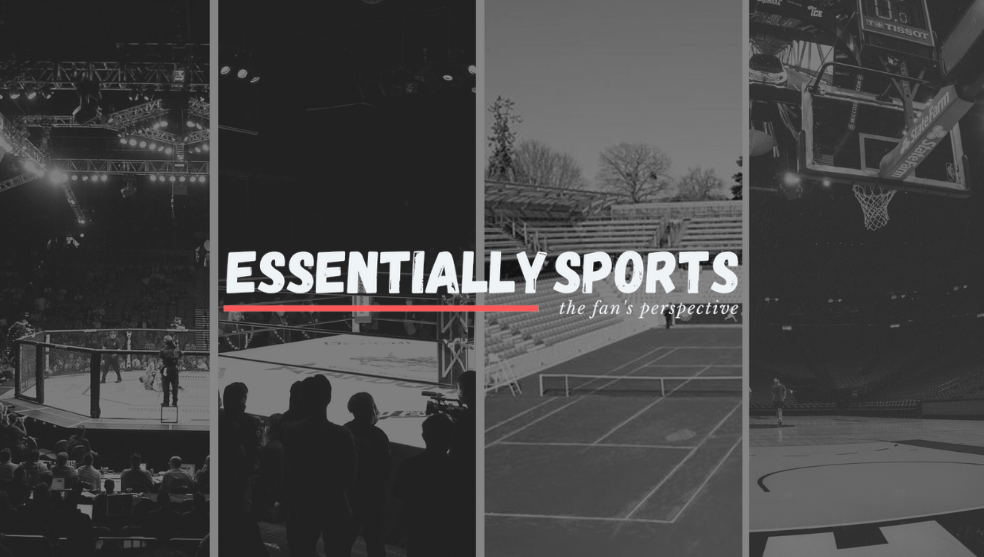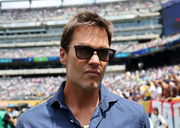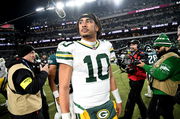

Back in 2012, Russell Wilson was a quarterback who did everything right—and still wasn’t enough. A record-setting passer. A dual-sport athlete. A locker-room general. But at 5-foot-10 and five-eighths, he was three-and-three-eighths inches short of the NFL’s traditional threshold. So when the first round of the draft came and went, Wilson sat with family and friends, watching taller, less polished prospects go ahead of him.
Watch What’s Trending Now!
That weekend in 2012 would alter the league’s perception of quarterbacking, for a while. Wilson would become a Super Bowl champion and one of the most efficient passers in NFL history. “He’s what you call an outlier,” former Dallas Cowboys executive Gil Brandt had said, whose grading system would’ve subtracted 15 points for Wilson’s height. “You go broke looking for those guys. For every guy that you draft that’s three inches and four inches below the accepted minimum, 99 of 100 are going to fail. He’s a real exception.”
Thirteen years later, as the Cleveland Browns brought in Dillon Gabriel—a 5-foot-11 signal-caller with a strikingly similar statistical résumé and play style—they were again forced to ask: How much do the measurables still matter?
ADVERTISEMENT
NFL analyst Jake Burns, while talking on ‘The Dawgs’ podcast, compared the trajectory of Wilson to that of Gabriel’s. Highlighting their similarities, Burns raised concerns over Gabriel’s height compared to Wilson’s, asking whether Dillon’s style as the QB for the Browns will be the same as Wilson’s.“Dillon, as far as college goes whether it was at UFC, Oklahoma, Oregon. He will throw the football over the middle of the field. The things that you would think for a guy who’s pushing six feet, 5’11” and change. He is a pretty good athelete, he can run. Smart in terms of figuring out when to run. The anticipation is good, the ball placement is what I like the most. It’s just a matter of, in college, you can live in the middle of the field in a more easier sense because the atheletes aren’t quite as good. Now, they’re big but the NFL atheletes are bigger, they’re faster, and those hashmarks get tighter.”
View this post on Instagram
Gabriel’s college production is undeniable: over 18,000 passing yards and 155 touchdowns across three programs—UCF, Oklahoma, and Oregon. His experience in varied offensive systems mirrors Wilson’s own whirlwind college trajectory, one that took Wilson from NC State to Wisconsin just months before leading the Badgers to a Big Ten title.
ADVERTISEMENT
And the rookie is no stranger to being doubted. Like Wilson, he’s methodical in preparation, preternaturally calm, and intensely self-aware. “But I think you continue to watch guys of smaller stature execute at a high level and play really well. Brock Purdy, Tua [Tagovailoa], Baker Mayfield, Kyler Murray, and that’s just a couple of them. But you watch those guys and see how they maneuver and how well they’ve played in the NFL,” he told reporters fully aware of the critics and their thoughts on his height issue.
ADVERTISEMENT
Can Dillion Gabriel follow the path of Russel Wilson?
Dillon Gabriel, standing at 5-foot-11, isn’t the first quarterback of this stature who has been doubted by the scouts before. However, while he navigates these significant challenges, analyst Jake Burns also discussed the career of Russell Wilson and whether Dillon, with the same attributes as the legend, can achieve NFL success.
Burns added, “The thing that I’m most concerned about, how he navigates the height. You know, it’s interesting, Russel Wilson comes in the league, a fantastic athelete. But he really only lived up the sidelines. He really lived outside the hashmarks. He just doesn’t really throw in the middle of the field very often. If you look at his heat chart, a lot outside the numbers. And he’s a creator, very athletic. That’s how he lived.”
Top Stories
NFL Make Final Punishment Decision on Controversial Patrick Mahomes Incident

Tom Brady Hints at Nefarious Actions From Bears After Packers Lose Sideline Heaters

Matt LaFleur Blames Locker Room After Issuing Painful Statement on Packers’ Loss

Bears DE Awaits Punishment for Controversial Jordan Love Incident After Packers Shared Injury Update

Prayers Pour In From Terrell Owens as 275lbs Former Cowboys Player Announces Major Health News

At Collegiate High in Richmond, Virginia, teammates still talk about Wilson’s 6 a.m. workouts and how he studied game film like it was calculus. At Wisconsin, where he showed up with a U-Haul and a month to win the locker room, he not only learned the playbook before fall camp—he was named captain before his first start. Coaches described his mental processing as “faster than normal people.” And still, the league hesitated. He fell to the third round. But 13 years, 350 touchdowns, and one Super Bowl later, Wilson proved it wasn’t just talent that let him carve out a Hall of Fame case. It was detail, durability, and an obsessive mastery of everything in his control.
ADVERTISEMENT
Similarly, height has long been a sticking point for Gabriel, dating back to the NFL Draft process where his stature overshadowed his proven production and experience, ultimately dropping him to the third round at No. 94 overall. And then there are the reporters who often crack an insensitive joke or two about his height.
Yet Gabriel is quick to deflect the focus from his physical measurements. “I’ve had the most experience ever, as you can imagine, starting in high school as a freshman all the way into my senior year on varsity, and then I’ve done the same thing in college,” Gabriel noted. “I’m a leader. I’m a winner. I’ve won at all three spots, and I’ve done it in big games.”
For Gabriel, the challenge is clear: prove that success at the quarterback position is measured far beyond inches and pounds, and that intangibles like experience, field vision, and leadership hold equal, if not greater, weight.
ADVERTISEMENT
ADVERTISEMENT
ADVERTISEMENT
ADVERTISEMENT

